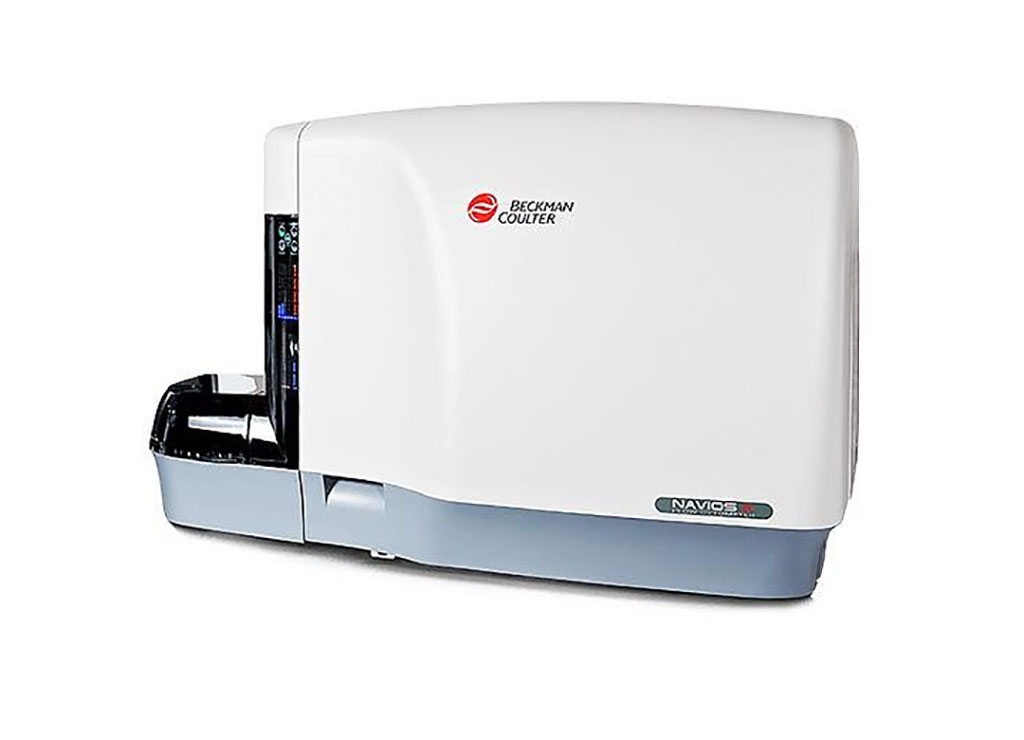MRD Assessed by Multiparameter Flow Cytometry in Transplant-Eligible Myeloma
By LabMedica International staff writers
Posted on 05 Jul 2021
Multiple myeloma (MM) treatment has considerably improved in the past 15–20 years. The current paradigm for transplant-eligible newly diagnosed MM (NDMM) patients consists of induction, stem-cell mobilization and autologous stem-cell transplantation (ASCT), followed by consolidation and/or maintenance.Posted on 05 Jul 2021
Currently, minimal residual disease (MRD) assessment is the most sensitive tool to measure the depth of response in MM patients. Indeed, among patients achieving a complete response (CR), MRD-positive patients have an inferior progression-free survival (PFS) and overall survival (OS) compared with MRD-negative ones, and a similar outcome to those achieving a partial response (PR).

Image: The Navios EX flow cytometer offers a solution for advanced cytometry applications with workflows for high throughput laboratories (Photo courtesy of Beckman Coulter)
A large international team working with Hematologists at the University of Torino (Torino, Italy) conducted an MRD correlative study of a MM phase III trial in newly diagnosed MM patients achieving a suspected complete response before maintenance and every six months during maintenance. Transplant-eligible patients aged ≤65 years were enrolled from February 2011 to April 2014 in 172 European centers. A total of 321 patients before lenalidomide maintenance were evaluated for MRD assessment.
Bone marrow (BM) samples were processed in three European laboratories, applying EuroFlow-based multiparameter flow cytometry (MFC) protocols (eight colors, two tubes) with 10−4−10−5 sensitivity. Data were acquired using a FACSCanto II flow cytometer (BD Biosciences, San Jose, CA, USA). One of the laboratories (Torino) applied a local panel with minor differences in fluorochromes and antibodies; data were acquired using a Navios flow cytometer and analyzed with Kaluza software (Beckman Coulter, Brea, CA, USA).
The clinical scientists reported that at enrollment in the MRD correlative study, 76% (244/321) of patients were MRD-negative. In the intention-to-treat analysis, after a median follow-up of 75 months, 5-year progression-free survival was 66% in MRD-negative versus 31% in MRD-positive patients (Hazard Ratio [HR] = 0.39)), 5-year overall survival was 86% versus 69%, respectively (HR = 0.41). MRD negativity was associated with reduced risk of progression or death in all subgroups, including ISS-III (HR = 0.37) and high-risk fluorescence in situ hybridization (FISH) patients (HR = 0.38).
The authors conclude that their study confirms that MRD status by MFC is a strong prognostic factor in NDMM patients receiving intensification with novel agents or high-dose melphalan (HDM). The achievement of MRD negativity in patients with HR-FISH aberrations was associated with a significantly improved survival, underlining the importance of achieving deep responses in this setting. Finally, lenalidomide maintenance further improved the depth of response in standard-risk patients. The study was published on June 3, 2021 in the journal Blood Cancer Journal.
Related Links:
University of Torino
BD Biosciences
Beckman Coulter







 Analyzer.jpg)






